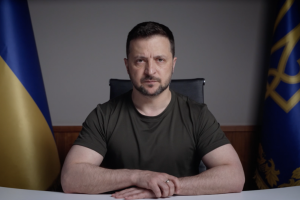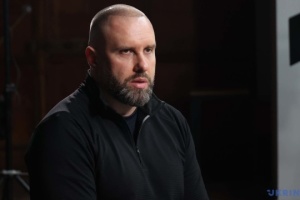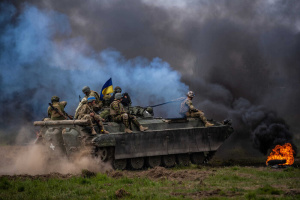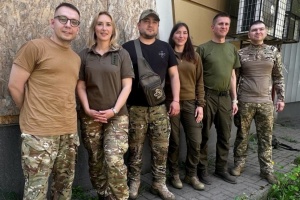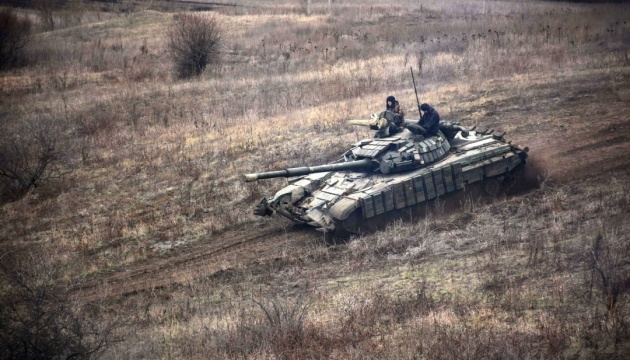
Explaining complex things in simple words: Humanitarian consequences of Russian aggression, rhetoric about ‘revenge’ and ‘retaliation,’ 10 years since ATO began in Ukraine’s east
Ukrinform
The Center for Strategic Communication and Information Security pursues efforts to provide a brief explanation to foreign audiences on the current topics of particular interest as regards Ukraine.
HUMANITARIAN CONSEQUENCES OF RUSSIAN AGGRESSION
During a meeting of the UN Security Council on April 11, UN Assistant Secretary- General Miroslav Jenča spoke about Russian war crimes against the civilian population.
- Russia's invasion of Ukraine and gross violation of the UN Charter and international law continues to cause great damage to the people of Ukraine.
- Since February 2022, the Office of the United Nations High Commissioner for Human Rights has recorded 10,810 civilian deaths, including 600 children, and 20,556 injured civilians, including 1,357 children. These are recorded cases, but the data are incomplete due to the lack of access to the temporarily occupied territories.
- In Ukraine, every seventh school was damaged and destroyed. More than 3,500 educational institutions have suffered some kind of destruction, almost 400 have been completely destroyed. About USD 14 billion is needed to restore the educational infrastructure, according to the latest estimates of the World Bank.
- The number of casualties is increasing: in March 2024, there were at least 126 dead and 478 wounded civilians, which is 20% more than the month before.
- The occupiers blowing up the Kakhovka HPP caused problems for about 11 million Ukrainians. UN representatives cannot get to the left bank of the Dnipro in the Kherson region.
RHETORIC ABOUT “REVENGE” AND “RETALIATION”
Russian propaganda is trying to present the destruction of Ukraine's energy system facilities as “revenge” for Ukrainian attacks on Russian refineries.
- Enemy propaganda often calls its acts of terror “revenge” or “retaliation” for some action of the Ukrainian Defence Forces.
- Thus, the Kremlin pretends to be not an aggressor, but a victim, appeals to “justice” and tries to form a negative attitude of Ukrainians to the proactive actions of the Defence Forces.
- In fact, every act or campaign of terror of Russia is planned in advance and is never an “impulsive reaction” to the achievements of the Ukrainian Defence Forces.
- It was Russia that launched an unprovoked aggression against Ukraine, and Russian attacks will continue regardless of whether the Ukrainian Defence Forces attack objects on the territory of Russia or not. The enemy will always find an “excuse.”
- Instead, the Ukrainian Defence Forces will continue successful attacks against the enemy's legitimate military targets because only an armed victory of Ukraine, not a “refusal to provoke,” will guarantee the cessation of Russian terror.
10 YEARS SINCE THE ANTI-TERRORIST OPERATION BEGAN IN THE EAST OF UKRAINE
On April 14, 2014, the Anti-Terrorist Operation in the east of Ukraine began.
- The beginning of the Russian-Ukrainian war was not the declaration of the anti-terrorist operation in April, but the armed occupation of Crimea by Russia in February-March 2014.
- When the ATO began, an anti-state rebellion orchestrated by Moscow had already been underway in the Donetsk and Luhansk regions, and militants had already seized several cities in the region.
- The main joke of April 2014 was a Russian word for a curb. The militants used this word, which the locals didn't know. This indicated that they were foreigners who came from Russia.
- The decision on the ATO was forced after Kyiv exhausted diplomatic means of influence. During the active phase of the ATO in 2014-2015, the Ukrainian authorities repeatedly initiated a ceasefire and negotiations to resolve the situation.
- The 2014-2022 war in the east was not a “popular uprising.” The ATO/JFO forces fought the armed formations of Russia, disguised as the local “people's militia.” That is why this Russian war against Ukraine is hybrid warfare.
Center for Strategic Communication and Information Security

